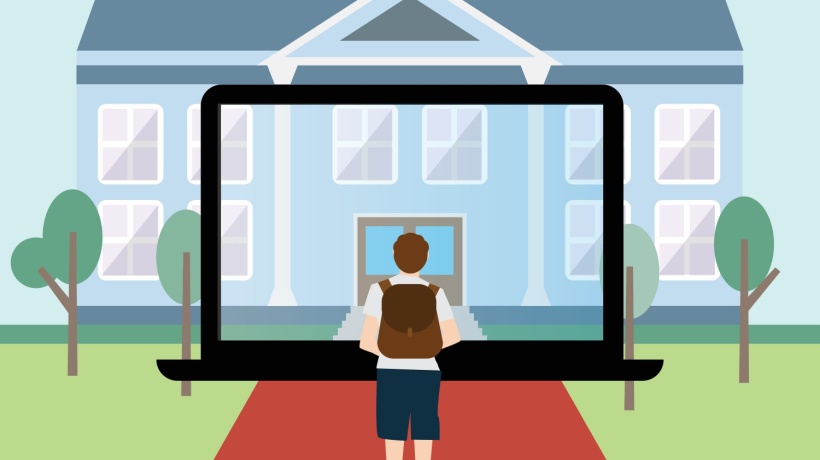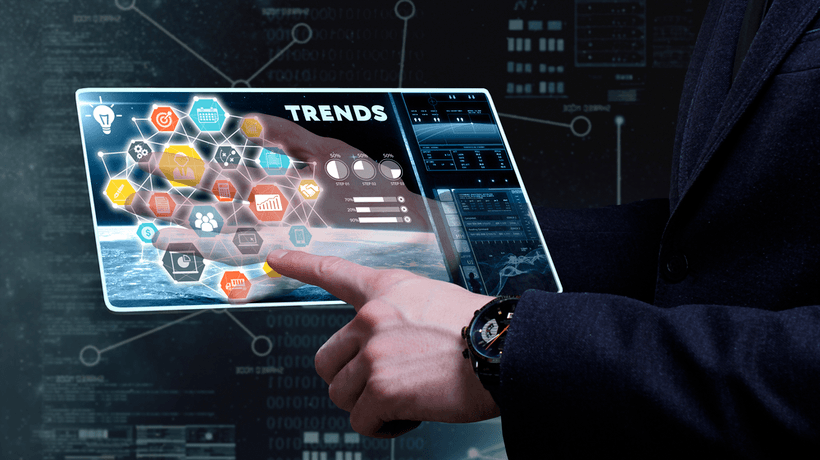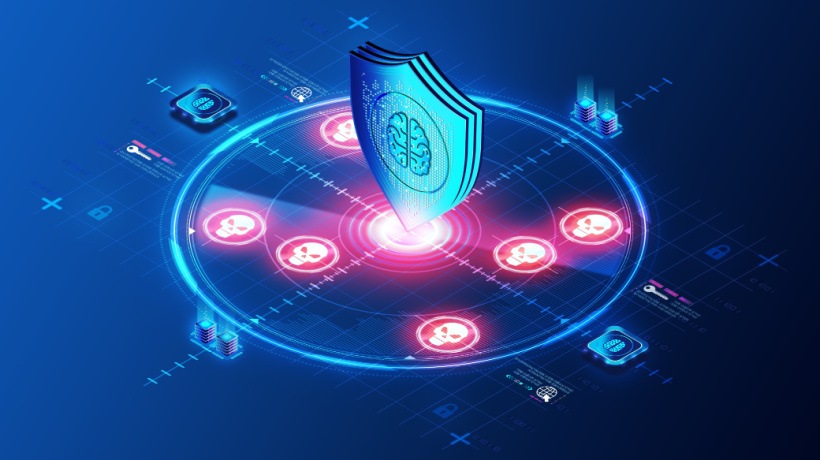Navigating The New Landscape Of Learning And Work
Technology has become an integral part of human lives, and the recent years are proof of it! Everything from classrooms to cubicles now leverage a hybrid model to tap into new possibilities for learning and potential development. Interestingly, the rise in tech-centered education and work approach is being openly accepted by many. Stats suggest that 58% of education professionals are optimistic about using technology for better education.
Businesses, too, have started to take a relatively new and innovative approach with the hybrid work mode. With a part of the workforce working alternative days from the convenience of their home, productivity increased by over 55%. The concept of the hybrid approach is modifying education and business models like never before. This article gives you a closer insight into the hybrid approach while exploring how to transition into it with minimal disruptions. Let's get started!
Understanding The Hybrid Era: Insight Into The New Normal
Following the end of the pandemic, hybrid learning is becoming more popular for many reasons. It is about leveraging all physical and online learning benefits based on specific requirements. This allows people to overcome multiple challenges that might hinder their growth easily.
Making the hybrid transition is easy as long as you take a well-thought-out approach. This means educating the faculty effectively and ensuring they have all the necessary resources to educate people remotely. One must also ensure that students or trainees have all the necessary resources and are compatible with this learning mode. Here are some key drivers of education in the hybrid era:
Technological Advancements
Recent technological advancements are one of the key factors in making the hybrid era a reality. With iOS and Android app development becoming more accessible, people can access all relevant solutions with minimal effort.
Remote Work And Learning Trends
The recent pandemic has transformed education and work significantly, with remote mode being the only remaining option. This trend gained quick and extensive popularity, making hybrid mode a relevant choice for people.
Changing Learner Demographics
The learner demographic around the globe is tech-savvy and competitive. As a result, hybrid mode became an excellent way for them to upskill themselves and leverage better employment opportunities.
Hybrid learning has only been possible because of growing access to high-speed internet and digitization. In most cases, digitization has significantly impacted education and training, making resources more easily accessible. Besides, digitization has also helped stakeholders enjoy more convenient education from the comfort of their homes.
The Role Of Traditional Education In Turning The Wheel
The traditional education system has undoubtedly stood the test of time, but widespread access to technology has also made way for more opportunities. There are certain upsides to traditional classroom-based education compared to hybrid education.
For instance, traditional education offers face-to-face interactions, helping students to learn better and resolve any queries instantly. Traditional education also offers a structured learning environment, which can enhance people's learning experience with better retention. On the other hand, making traditional education accessible to most has always been challenging, and the hybrid mode can help solve this.
Traditional + Latest Technology = Hybrid Methodology
Integrating cutting-edge technology into traditional education and training is one of the most effective methods to solve concerns such as accessibility. This is where Android and iOS app development may be used to make education available to people globally.
First, you may use technology in traditional classrooms to improve the learning experience. This will also assist students and trainees in better grasping fundamental topics, establishing a solid educational foundation. This way, moving from traditional to hybrid learning will be easier once the appropriate technology is in place. This will make learning more convenient and accessible to all people.
Digital Transformation In Education
Digitization on the educational front is now more evident than ever before. This becomes evident with the rise of things like:
eLearning Platforms
The number of eLearning platforms is increasing daily, making digitization an inevitable reality. This also has many benefits, with nine out of ten businesses offering employees eLearning opportunities.
Online Courses And Degrees
Another great development in the post-pandemic world is the growing prevalence of online courses and degrees. This is not surprising, considering online learning takes 40% to 60% less time than conventional learning.
The Rise Of Educational Apps
Educational apps are among the most notable of mobile app trends. Even now, 83% of countries leverage educational apps to ensure continual education following the pandemic.
However, while the digital revolution in education offers many advantages, it also has disadvantages. eLearning, for example, makes education more accessible, yet inclusion remains a big concern. Even today, there are many cases when people cannot reap the benefits of online learning owing to a lack of resources.
Another problem would be with increased screen time and the increased number of distractions during the studies. This, in turn, could impact learners and their learning abilities. Conversely, online learning allows users to tailor their courses and learn quickly.
Chatbots For Faster Response And More Innovative Hiring
Successful employees are happier with their employment. By recruiting chatbots, businesses may increase the number of qualified applicants for open positions. It has been demonstrated that chatbots significantly reduce candidate abandon rates. The bots save time for HR professionals so they may concentrate on their strategic responsibilities by responding to candidate inquiries.
Streamlined IT support
Another potential source of stress is inadequate IT assistance, particularly when team members often collaborate online. With what is known as intelligent automation, including AI-enabled helpdesk skills can increase the advantages of conventional automation.
Businesses might, for instance, integrate previous data to give automation more intelligence. Predictive analytics may be used to solve technological problems before they influence company operations and results.
Access To Online Wellness Platforms
It is evident that employers' goals can only be achieved by adopting a holistic approach to employee well-being and integrating it into the culture of the business. Online tools are especially crucial in light of the emergence of the hybrid workplace. A wealth of financial, legal, and dietetic services may now be accessed on a single platform, along with expert mental health counselors and wellness coaches accessible 24 hours a day.
Preparing Educators And Trainers
The recent epidemic has altered the job of educators, who must now go above and beyond to transmit their messages. As a result, instructors must become adept with all the current technologies and facilitators of learning to enable a seamless transition to education in the hybrid era.
More significantly, preparing for education in the hybrid era has become critical to guarantee that they make the most use of available resources. Several methods exist, including offering professional development programs and making assistance and resources more available. Finally, analyzing an educator's preparation is critical to comprehend their fit for the position better.
Learner-Centered Approaches
One of the fundamental purposes of any educational approach is to educate students, and hybrid learning is no exception. As a result, it only makes sense to use a learner-centric strategy to improve personalization. Adaptive technologies like Machine Learning (ML) and Artificial Intelligence (AI) may be utilized to enhance customization. Adapting the information to a person's needs promotes better learning experiences.
A blended education paradigm won't succeed unless you work to give your pupils more agency. You may do this by assisting them in learning how to learn on their own and by giving them the resources they require to increase their digital literacy.
The ideal learner-centric approach helps overcome difficulties with access and equity, which is the final piece of the jigsaw puzzle. You must work to close the digital divide and provide everyone access to more equitable possibilities. Additionally, work to provide inclusive learning settings that offer all children the same opportunity.
Technology will be the backbone of education and training, and this transformation will expand the benefits of hybrid learning in the coming years. In the future, new technologies such as Artificial Intelligence and Machine Learning will substantially influence education in the hybrid era. This technology will significantly improve learning experiences. Because of this it is almost guaranteed that remote work and learning will continue in the future. This implies that you must also take adequate measures to address the issues in the education sector in the next few years.
You must be aware of everyday regulatory and ethical concerns to maintain the approach. This ensures that you use technology for teaching while maintaining unrivaled compliance.
Final Words
Learning and information access have been developing since the beginning, and this process will continue. As a result, people must take proper steps to stay up-to-date with these developments. This changing future of education and training includes the hybrid learning education approach. As a result, they must immediately capitalize on these developments, identify new possibilities, and solve pertinent issues. This will only become more necessary and difficult as the competition grows. So, for the greater good, use hybrid learning and embrace education in the hybrid era.









